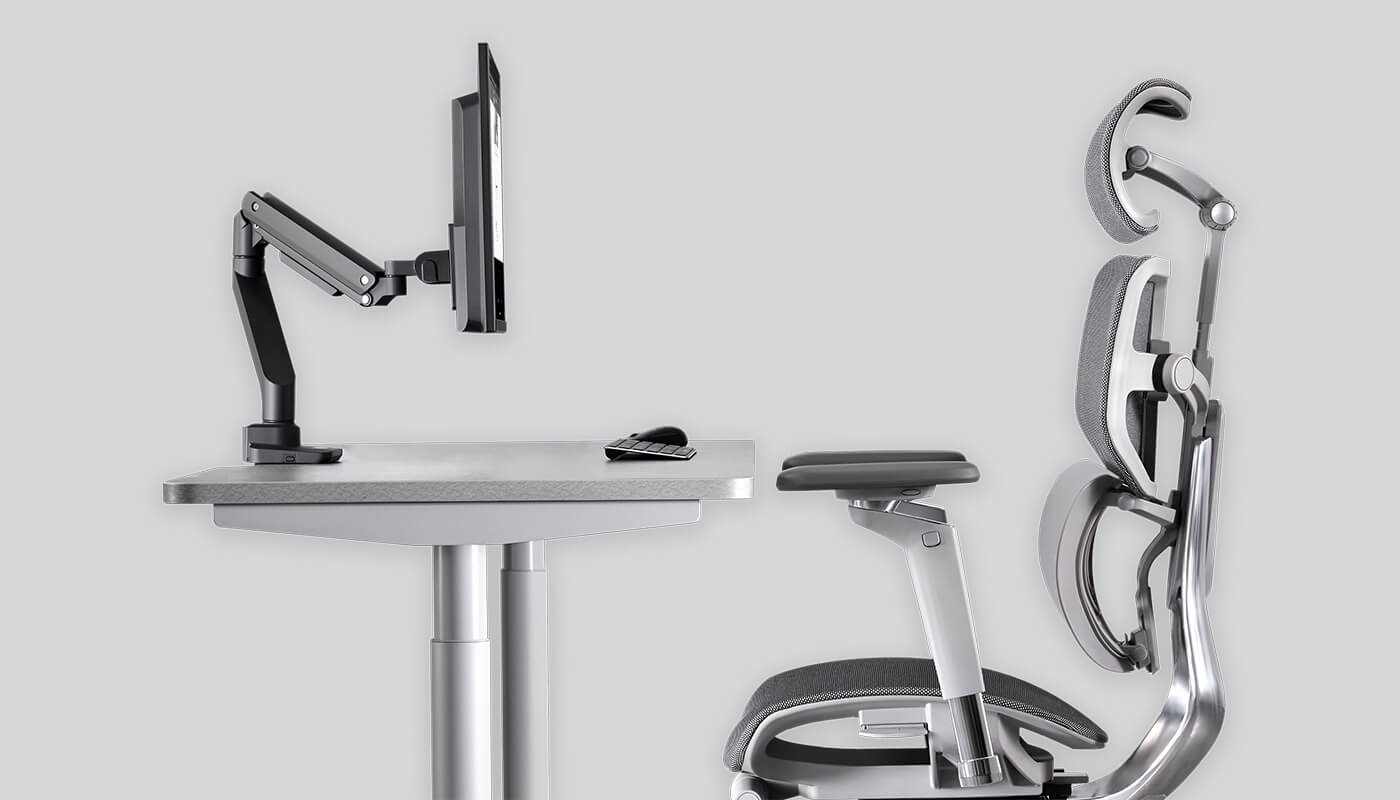
"Com que Frequência Deve Levantar-se da Secretária: Um Guia para uma Rotina de Trabalho Mais Saudável"
Partilhar
No mundo digital acelerado de hoje, muitos de nós passamos longas horas nas nossas secretárias, seja num escritório ou em casa. O aumento do trabalho remoto amplificou ainda mais este estilo de vida sedentário, pois ficamos colados aos ecrãs por períodos prolongados. No entanto, esta mudança para o trabalho de secretária trouxe consigo uma série de preocupações de saúde.
A boa notícia é que há uma solução simples para contrariar os efeitos negativos de estar sentado por longos períodos: levantar-se regularmente da sua secretária. Neste guia abrangente, exploraremos as recomendações sobre a frequência com que deve levantar-se da sua secretária, bem como dicas práticas para integrar mais movimento na sua rotina de trabalho.
Na era digital de hoje, muitas pessoas passam longas horas sentadas em secretárias, lidando com as exigências do trabalho de escritório ou com a crescente popularidade dos escritórios em casa. O aumento do trabalho remoto intensificou ainda mais esta tendência, mantendo-nos presos às secretárias e ecrãs por períodos prolongados. Lamentavelmente, esta mudança para um estilo de trabalho mais sedentário representa riscos significativos para a saúde.
Felizmente, existe uma abordagem simples, mas eficaz, para reduzir os impactos negativos de estar sentado por longos períodos: incorporar pausas regulares para ficar de pé na sua rotina. Este recurso fornece informações de especialistas sobre a frequência ideal para pausas de pé e apresenta métodos práticos para integrar mais atividade física no seu horário de trabalho diário.
Com que frequência deve levantar-se
Encontrar a frequência ideal para fazer pausas em pé requer um equilíbrio cuidadoso entre os períodos de estar sentado e em pé. Os especialistas em saúde recomendam integrar pausas regulares de movimento ao longo do dia, seguindo uma diretriz geral: manter uma proporção de 1:1 a 1:3 entre estar sentado e em pé. Na prática, isso pode envolver ficar em pé por aproximadamente 15 minutos por hora ou optar por uma sessão de 45 minutos em pé a cada três horas durante um dia de trabalho de 8 horas.

Reconhecer a singularidade da fisiologia individual é crucial, pois o que funciona para uma pessoa pode não funcionar para outra. Portanto, é importante estar atento às necessidades do seu corpo e ajustar o seu horário de permanência em pé de acordo, para encontrar a rotina mais benéfica e confortável para si.
Os Riscos e Realidades de Estar Sentado por Longos Períodos
Numerosos estudos científicos têm lançado luz sobre os riscos para a saúde associados a um estilo de vida sedentário. O tempo prolongado sentado tem sido associado a um risco aumentado de doenças cardiovasculares, diabetes, obesidade, distúrbios musculoesqueléticos e até problemas de saúde mental.
Numerosos estudos científicos lançaram luz sobre os riscos para a saúde associados a um estilo de vida sedentário. O sedentarismo prolongado tem sido associado a um risco aumentado de doenças cardiovasculares, diabetes, obesidade, distúrbios musculoesqueléticos e até problemas de saúde mental.
O corpo humano beneficia do movimento, mas a frequência com que nos levantamos da secretária torna-se uma questão crítica quando passamos longos períodos imóveis. O comportamento sedentário prolongado pode resultar em músculos enfraquecidos, diminuição da circulação sanguínea e um declínio na saúde geral. Para esclarecer os perigos de estar sentado por longos períodos, compilámos um exame abrangente dos riscos associados ao tempo excessivo passado sentado.
Doenças Cardiovasculares
Períodos prolongados de estar sentado estão diretamente ligados a um maior risco de doenças cardíacas e AVC. A falta de movimento leva a uma diminuição do fluxo sanguíneo e a níveis mais baixos de atividade de queima de gordura, contribuindo para problemas cardiovasculares.
Diabetes Tipo 2
O comportamento sedentário associado ao tempo prolongado sentado pode aumentar o risco de desenvolver diabetes tipo 2 devido à resistência à insulina causada pela falta contínua de atividade física.
Obesidade
A obesidade é um risco significativo quando o movimento é mínimo e a ingestão de calorias excede o gasto energético muito baixo de estar sentado. O desequilíbrio leva ao ganho de peso e a problemas de saúde associados.
Distúrbios Musculoesqueléticos
A dor crónica nas costas, a tensão no pescoço e a redução da flexibilidade são resultados comuns de estar sentado por muito tempo, frequentemente exacerbados por má postura e falta de movimento.
Problemas de Saúde Mental

Os riscos de depressão e ansiedade são aumentados com o sedentarismo prolongado, em parte devido à natureza isolante e estática dos estilos de vida sedentários.
Músculos e Ossos Enfraquecidos
A atrofia muscular e os ossos enfraquecidos são consequências da falta de movimento do corpo humano, levando a uma má postura e a uma densidade óssea reduzida.
Má Circulação Sanguínea
Sentar-se por longos períodos diminui a circulação sanguínea, afetando a saúde geral e contribuindo para o risco de doenças cardiovasculares.
É importante quebrar o ciclo de sedentarismo e incorporar movimento regular nas nossas vidas diárias. Ao fazê-lo, podemos mitigar os efeitos negativos de estar sentado e melhorar a nossa saúde e bem-estar geral.
Dicas Práticas para Integrar o Uso de Posição de Pé na Sua Rotina
Agora que entendemos a importância do movimento regular, vamos explorar orientações práticas sobre a frequência com que deve levantar-se da sua secretária e formas eficazes de integrar mais pausas para se levantar no seu horário de trabalho diário.
Definir Lembretes

Com as exigências do trabalho, é fácil perder a noção do tempo e esquecer de fazer pausas. Defina lembretes no seu telemóvel ou computador para o lembrar de se levantar e mexer a cada 30 minutos. Use software de pausas ou lembretes de temporizador para o ajudar a manter-se no caminho certo.
Faça Pausas Ativas

Em vez de passar o tempo nas redes sociais durante as suas pausas, use esse tempo para se envolver em atividade física leve. Dê uma curta caminhada, faça alguns exercícios de alongamento ou realize exercícios na secretária para manter o seu corpo ativo e energizado.
Otimize a Configuração do Seu Espaço de Trabalho

Certifique-se de que o seu espaço de trabalho está ergonomicamente projetado para apoiar uma postura saudável. Ajuste a altura da sua cadeira, a altura da mesa e a posição do monitor para manter o alinhamento adequado da sua coluna. Use um cadeira ergonómica que proporciona suporte lombar e promove uma boa postura.
Incentivar Reuniões em Pé

Sempre que possível, sugira reuniões em pé em vez de se sentar à volta de uma mesa de conferência. As reuniões em pé não só promovem o movimento, como também tendem a ser mais eficientes e produtivas.
Conclusão
Quebrar o ciclo de estar sentado por longos períodos é essencial para a nossa saúde e bem-estar geral. Um aspeto crítico desta mudança envolve compreender com que frequência deve levantar-se da sua secretária. Isto inclui a incorporação de pausas regulares para ficar de pé, de forma a contrariar eficazmente os riscos para a saúde associados a um estilo de vida sedentário, aumentando consequentemente a nossa produtividade. Ao seguir a frequência recomendada e empregar métodos práticos, como definir lembretes, usar secretárias ajustáveis, fazer pausas ativas, otimizar o seu espaço de trabalho para melhorar a ergonomia e investir em soluções ergonómicas, pode estabelecer uma rotina de trabalho mais saudável que melhora tanto o seu bem-estar físico como mental.
É importante dar prioridade à sua saúde e trabalhar ativamente na melhoria dos seus hábitos de trabalho. Comece por dar o passo crucial de se levantar da secretária a intervalos regulares e incorporar pausas para ficar de pé. Aumente gradualmente a duração destas pausas. Cada esforço para incluir pausas de pé e melhorar a sua rotina de trabalho é um passo significativo em frente. Abrace os muitos benefícios do movimento regular e das melhorias ergonómicas, que levarão a uma vida de trabalho mais dinâmica e eficiente.
